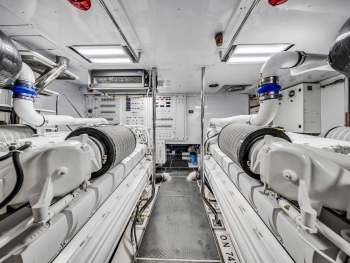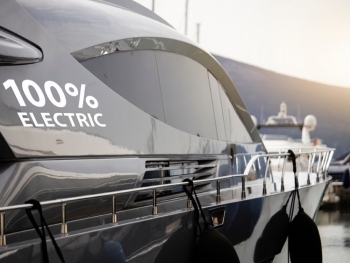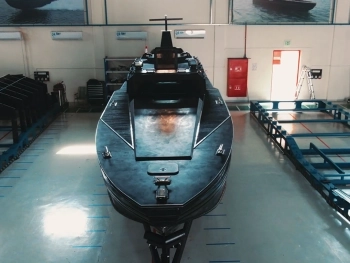The gentle hum of engines has long been part of the soundtrack of yachting. But as the world shifts toward cleaner, quieter technologies, a new generation of yachts is gliding across the water - almost silently.
Hybrid and electric propulsion are no longer futuristic concepts; they’re the new benchmark for responsible luxury. Combining advanced engineering, smart energy management, and a commitment to sustainability, this revolution is changing what it means to own and enjoy a yacht.
From cutting-edge superyachts to innovative boutique builders like Perulla, the global move toward “silent seas” is redefining performance, comfort, and conscience.
1. The Changing Tide: Why Hybrid and Electric Yachts Are Rising
The yachting industry is experiencing a transformation driven by environmental awareness, regulation, and technology.
Key Drivers Behind the Shift
- Eco-Conscious Buyers: Modern yacht owners care about environmental impact as much as comfort and design.
- Regulatory Pressure: Stricter emission and noise standards in Europe and protected waters are accelerating innovation.
- Technological Maturity: Advances in batteries, electric motors, and control systems make hybrid propulsion more practical than ever.
- Lifestyle Evolution: Quiet cruising, reduced vibration, and seamless power transitions enhance onboard luxury.
In short, hybrid and electric yachts allow owners to enjoy power, peace, and purpose - without compromise.
2. Understanding Hybrid and Electric Propulsion
2.1 Fully Electric Yachts
Fully electric yachts rely solely on battery power to run motors and onboard systems. They are ideal for day cruising, lakes, and short-range coastal trips.
Pros:
- Zero emissions and minimal noise.
- Low operating and maintenance costs.
- Instant torque and smooth acceleration.
Cons:
- Limited range depending on battery capacity.
- Longer recharge times compared to refueling.
- Heavier weight due to large battery packs.
Use case: Perfect for eco-marinas, urban waterways, and green destinations with charging infrastructure.
2.2 Hybrid Yachts
Hybrid systems combine traditional diesel engines with electric motors and batteries, giving owners the flexibility of both worlds.
Operating Modes:
- Electric Mode – Silent, zero-emission cruising for short distances.
- Hybrid Mode – Engines and motors work together for efficiency and performance.
- Diesel Mode – Full engine power for longer voyages or higher speeds.
- Hotel Mode – At anchor, the yacht runs systems on stored electric power, reducing generator noise.
Benefits of Hybrid Yachts:
- Fuel savings of up to 30% compared to conventional propulsion.
- Near-silent operation during low-speed cruising.
- Reduced vibration and emissions.
- Extended range and flexible operation.
These systems make hybrid yachts ideal for owners who cruise often but value tranquility and sustainability.
3. The Technology Powering Silent Seas
The leap toward hybrid and electric yachts is made possible by remarkable innovations in multiple areas:
3.1 Battery Technology
- Lithium-Ion Batteries: Lightweight and high-capacity, now standard in most electric yachts.
- Solid-State Batteries (Next-Gen): Expected to double energy density and safety by 2026–2027.
- Smart Battery Management Systems (BMS): Monitor temperature, charge cycles, and performance in real-time.
3.2 Electric Motors
- Permanent Magnet Motors (PMM): Offer superior efficiency and compact size.
- Pod Drives: Combine motor and propeller into one unit for easy maintenance and precision control.
3.3 Energy Recovery & Solar Integration
- Regenerative Propulsion: Recharges batteries while under sail or decelerating.
- Solar Panels: Integrated on roofs or decks to power onboard systems.
- Hydrogen & Fuel Cell Research: Emerging solutions for true long-range zero-emission cruising.
These technologies allow yachts to travel farther, operate cleaner, and offer an unprecedented level of comfort and autonomy.
4. Design Innovations for Hybrid and Electric Yachts
A quieter, cleaner propulsion system changes everything - from layout to structure.
Key Design Adaptations
- Optimized Weight Distribution: Battery banks are integrated into hulls for stability.
- Hydrodynamic Efficiency: Sleeker hull shapes reduce drag and extend range.
- Smart Energy Systems: Digital dashboards display live fuel and battery analytics.
- Noise & Vibration Dampening: Electric propulsion eliminates engine-room rumble, creating a serene onboard atmosphere.
Yacht designers increasingly collaborate with naval architects and energy engineers to balance beauty, performance, and sustainability in one cohesive design.
5. Leading the Wave: Builders and Innovators
Across the globe, yacht builders are racing to perfect hybrid and electric technology - but it’s not only the giants leading the charge.
Pioneers in Innovation
- Sunreef Yachts: Luxury solar-powered catamarans using composite integration and regenerative energy systems.
- Silent Yachts: True zero-emission electric catamarans with 100% solar autonomy.
- Feadship & Lürssen: Investing heavily in hydrogen hybrid propulsion for superyachts.
- Perulla: A boutique builder exploring polyethylene hulls - a material ideal for pairing with hybrid systems thanks to its light weight, durability, and insulation properties.
Boutique innovators like Perulla represent the next chapter: yachts that are not just luxurious and durable, but also forward-thinking and sustainable by design.
6. The Benefits: Why Owners Are Going Hybrid
6.1 Quieter Cruising
Experience true peace on the water - no vibrations, no diesel drone, just the sound of waves.
6.2 Lower Operating Costs
Reduced fuel consumption and simplified maintenance save thousands annually.
6.3 Cleaner Footprint
Hybrid systems cut emissions drastically, making it easier to meet evolving environmental standards.
6.4 Access to Restricted Zones
Silent, emission-free propulsion allows entry into marine reserves and eco-protected waters often off-limits to conventional yachts.
6.5 Resale Value
As regulations tighten, eco-friendly yachts maintain higher demand and resale potential.
7. Challenges & Considerations
The move to hybrid and electric isn’t without hurdles:
- Infrastructure Gaps: Limited charging stations in many regions.
- Upfront Costs: Higher purchase price due to technology and materials.
- Battery Disposal & Recycling: Still evolving, though major improvements are underway.
- Range Anxiety: Long-range electric cruising remains limited compared to diesel.
However, these are short-term growing pains. As battery tech improves and infrastructure expands, hybrid and electric yachts will become the default standard for new builds.
8. The Future of Yachting: Sustainable Luxury
The future belongs to yacht owners who see sustainability not as a sacrifice but as an evolution of luxury.
In 2025 and beyond, hybrid propulsion will dominate new builds, while fully electric yachts will become common for coastal and regional cruising. The “silent sea” revolution isn’t just about technology - it’s about redefining what freedom at sea truly means.
Builders like Perulla are at the forefront, exploring innovative materials and design principles that perfectly complement this movement.
With their focus on durable polyethylene hulls, energy efficiency, and forward-thinking craftsmanship, Perulla’s philosophy aligns with a world where yachts are not only beautiful but responsible.
The age of roaring engines and fuel-hungry cruisers is giving way to a new era of quiet power and intelligent design.
Hybrid and electric yachts represent the harmony between human innovation and nature’s serenity - allowing owners to explore the oceans with both luxury and conscience.
As the market matures, expect the question to change from “Should I go electric?” to “Why wouldn’t I?”
In the silent seas of tomorrow, the sound of progress is peace itself.












